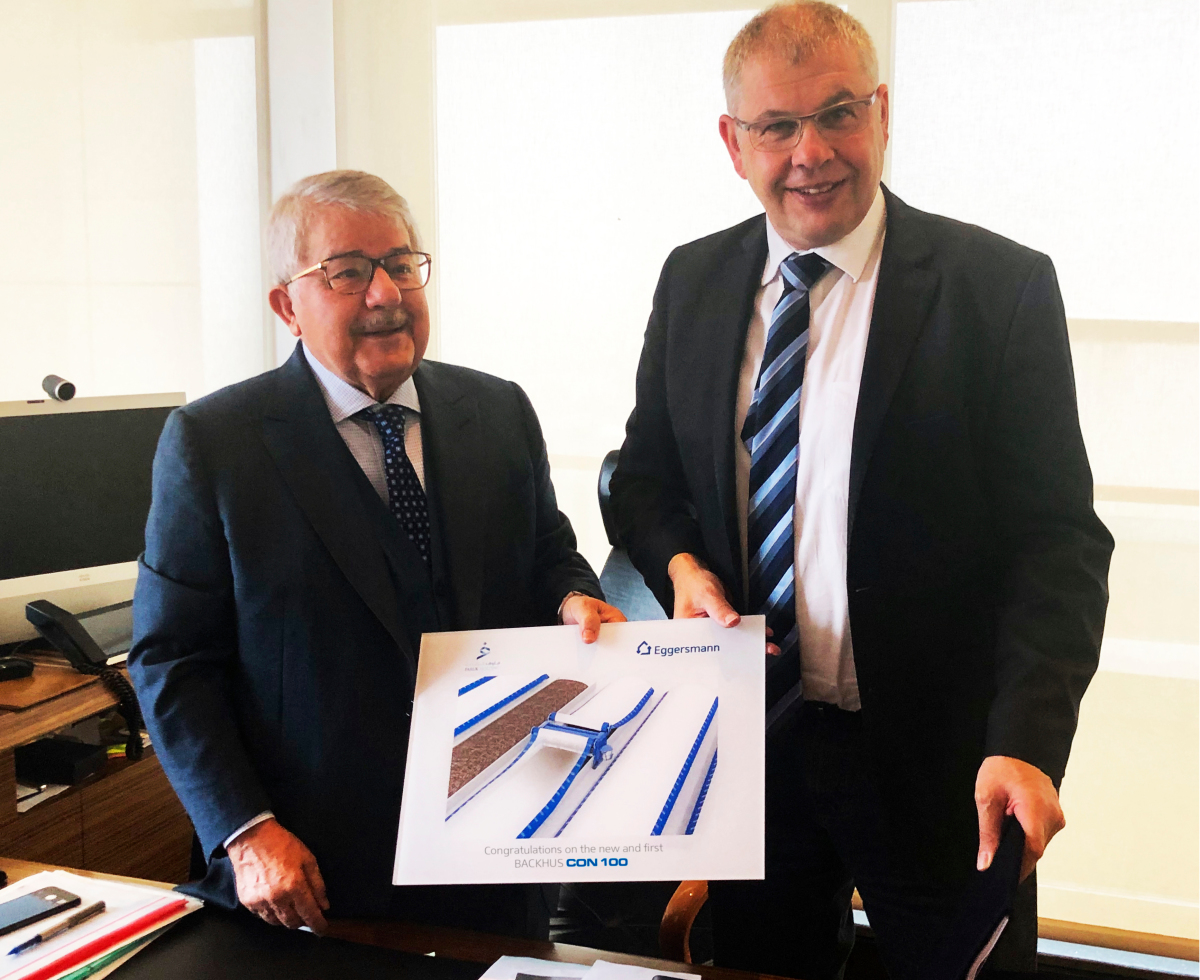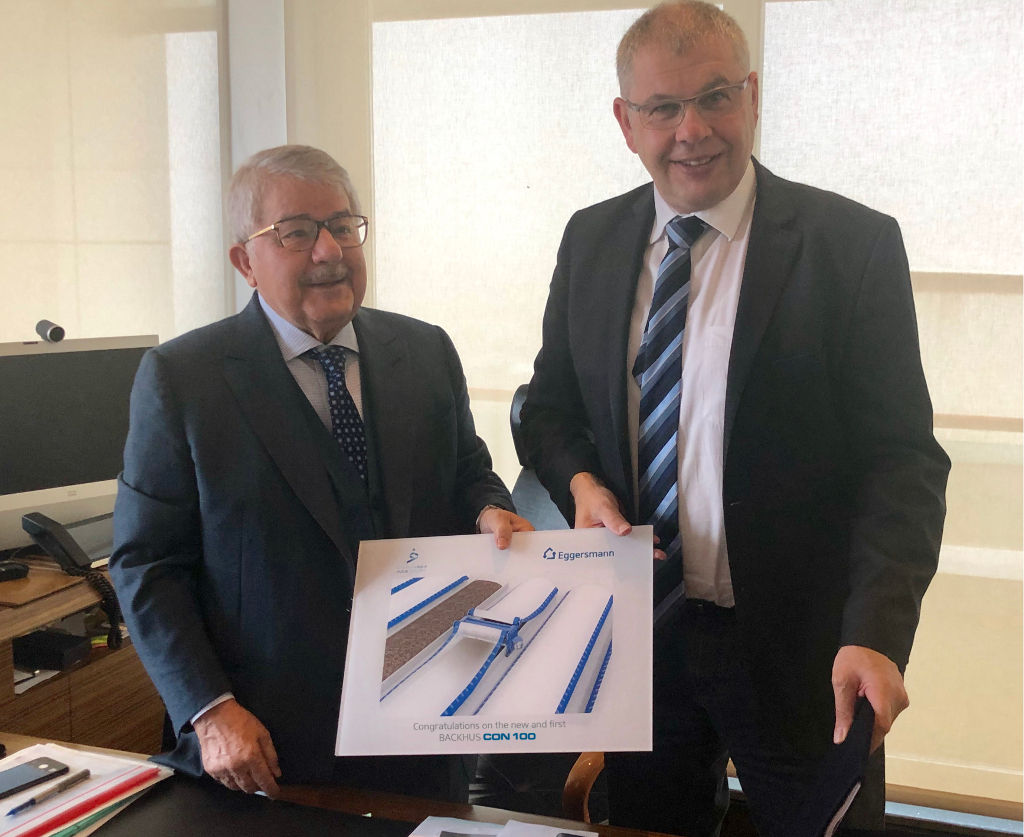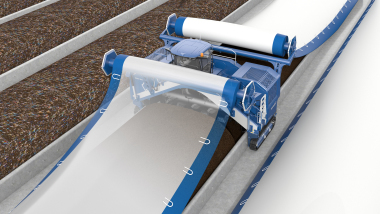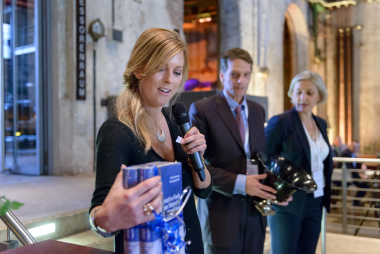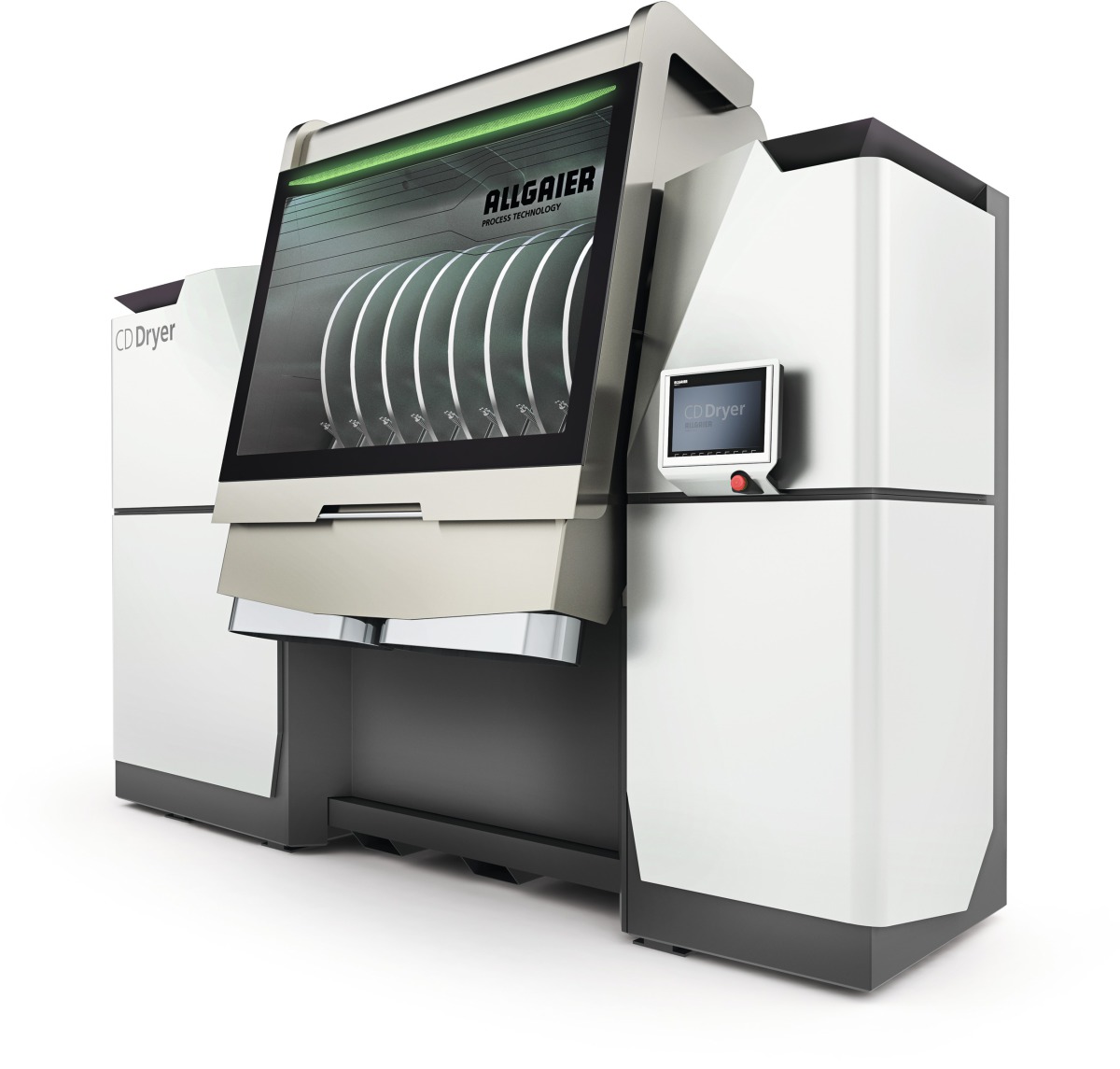Globally unique GEA process for sewage sludge treatment wins prestigious WEF award
16.03.2023For municipal and industrial wastewater treatment plants with limited disposal and recycling options, the new GEA biosolids Granulator sets the course for sustainable recycling management.
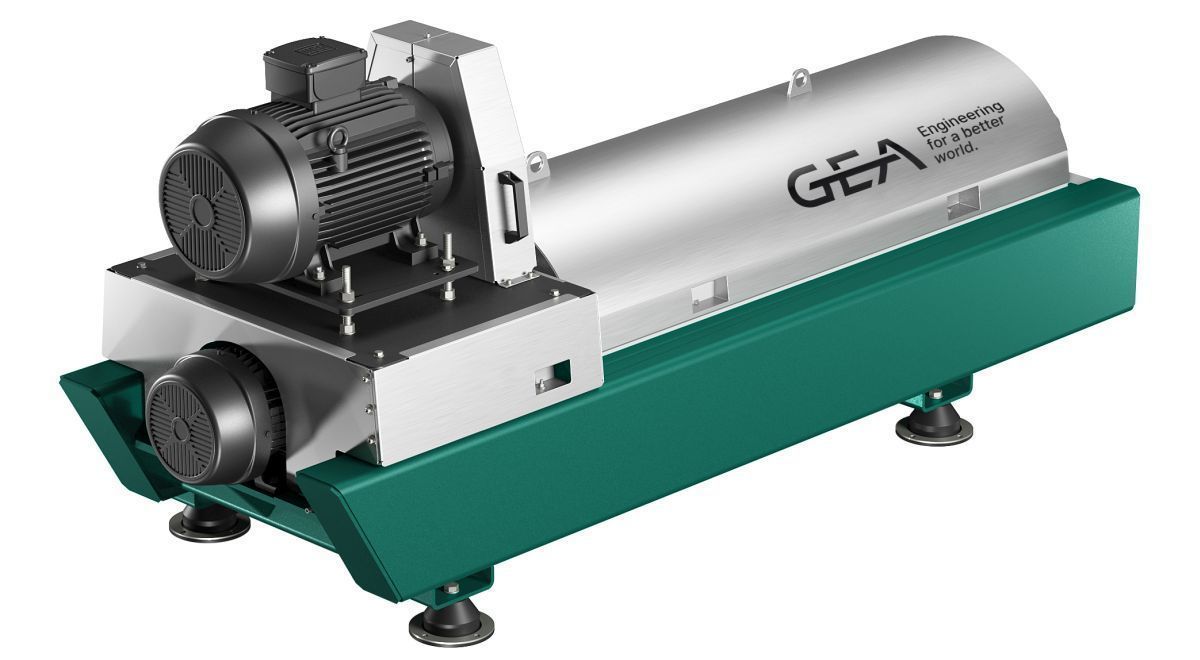 1 GEA biosolids Decanter prime 4000
1 GEA biosolids Decanter prime 4000
© GEA
The process, which is unique in the world to date, combines two GEA competencies: centrifuge-based dewatering and drying technology. The end product opens up additional recycling options for the end user, for example in agriculture, composting, or incineration as fuel and fuel additive. GEA has now received the prestigious "Innovative Technology Award" from the Water Environment Federation (WEF) for the GEA biosolids Granulator. Henni Weweler, GEA Senior Director Line Business Environment - Business Unit Separators, and James Hanson, P.E., GEA Mechanical Equipment US, accepted the prestigious award during a ceremony at the WEFTEC 2022 event in New Orleans. The award was presented by Jamie Eichenberger, P.E., past president of the Water Environment Federation.
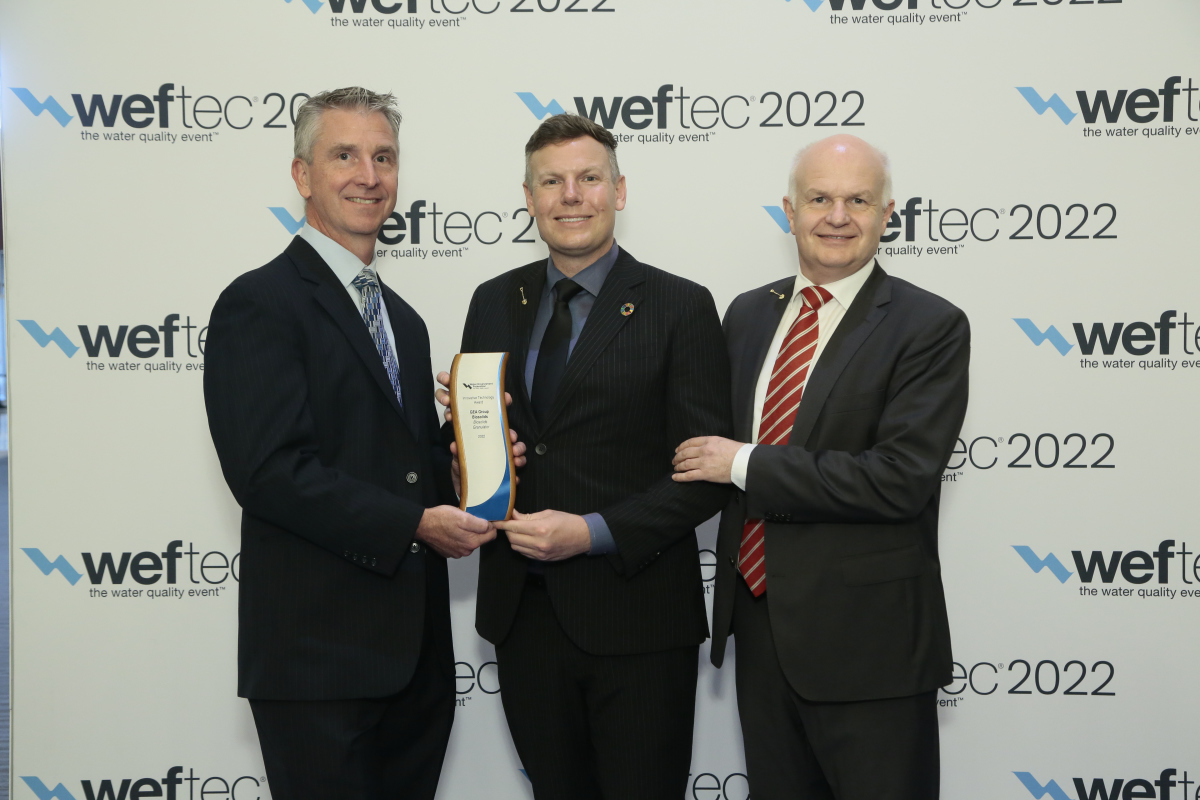 Henni Weweler, GEA Senior Director Line Business Environment – Business Unit Separators (right) and James Hanson, P.E., GEA Mechanical Equipment US (left), accepted the prestigious award during a ceremony at WEFTEC 2022 in New Orleans. The award was presented by Jamie Eichenberger, P.E., past president of the Water Environment Federation (center)
Henni Weweler, GEA Senior Director Line Business Environment – Business Unit Separators (right) and James Hanson, P.E., GEA Mechanical Equipment US (left), accepted the prestigious award during a ceremony at WEFTEC 2022 in New Orleans. The award was presented by Jamie Eichenberger, P.E., past president of the Water Environment Federation (center)
© WEF
Stackable end product with minimal pathogen regrowth
GEA experts have developed a technology that is entirely in line with a successful circular economy. The residual energy from the ejection of the dewatered solid from the rotating centrifuge bowl is put to use by allowing the particles to move freely in a drying chamber.
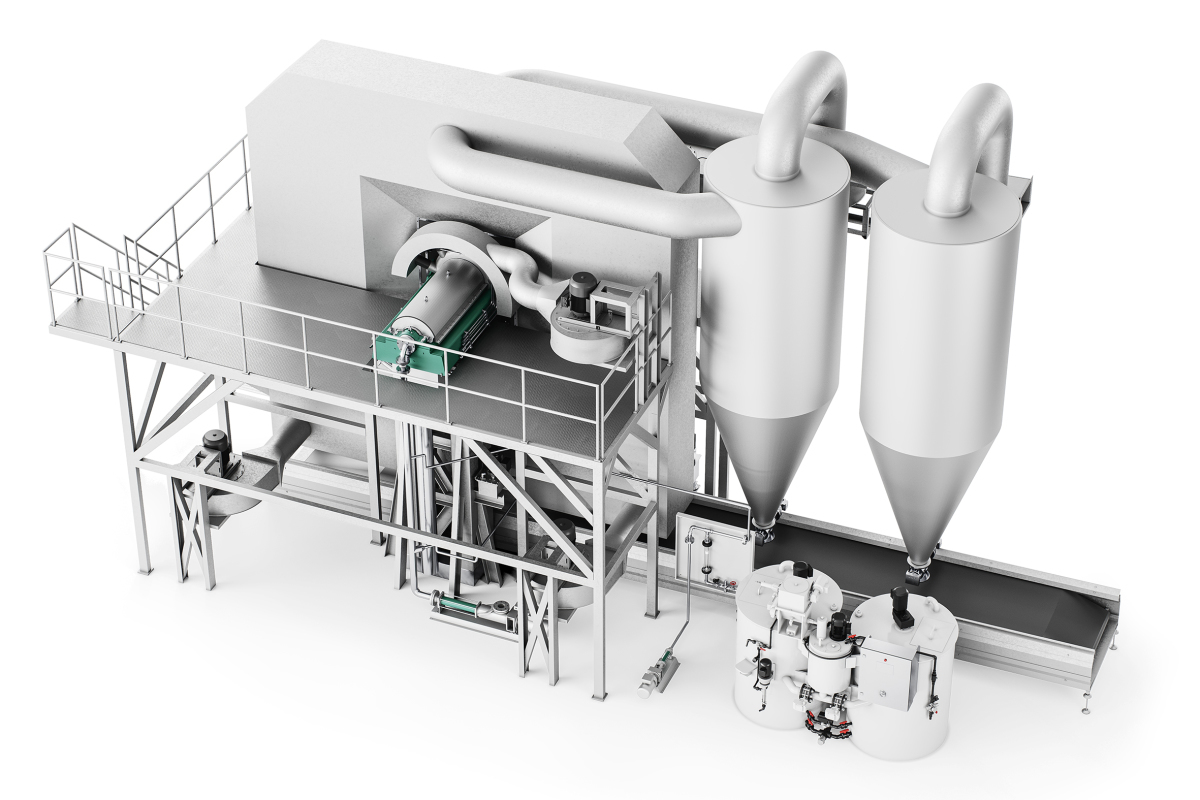 GEA biosolids Granulator – innovative dry-on-demand solution for sewage sludge treatment
GEA biosolids Granulator – innovative dry-on-demand solution for sewage sludge treatment
© GEA
These particles are then immediately heated by a stream of hot air whereby moisture efficiently evaporates. The particles are then further dried by a secondary hot air stream in the drying chamber. Within seconds, the result is an improved dried granule with up to 50 % dry solids. These process results can be achieved using either low-temperature (75 – 90 °C) waste heat available on-site, heat generated from a fuel source, or a combination of both.

